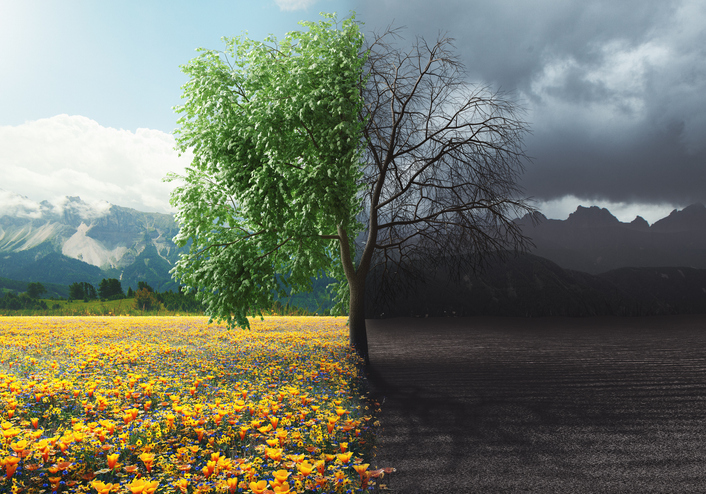
Imagine you’re in line at your favorite coffee shop, craving that life-giving latte, and someone brazenly cuts in front of you. Annoying, right? Now, zoom out a little. Compare that irritation to something more sinister, like a serial killer plotting their next victim or a human trafficker exploiting others for profit. Suddenly, the coffee-line cutter doesn’t seem so bad anymore, does it? But here’s the twist—is that small act of selfishness just a minor hiccup in someone’s day, or could it be part of something bigger, a glimpse into the darker side of human behavior? Basically, it begs the question we all wrestle with at some point: does evil actually exist?
Now I know, the word “evil” might conjure up images of supervillains with ominous laughs or cartoonish characters twirling mustaches. But there’s this growing trend—call it optimism, call it denial, call it whatever you want—that argues evil isn’t real. That people only do bad things because of circumstance, misunderstanding, or ignorance. And while it’s nice to believe everyone’s inherently good and just needs a hug, history (and, well, life) tells us a different story.
Why Denying Evil is… Risky
What happens when we refuse to believe in evil? Well, honestly, not great things. When people insist there’s no such thing as malicious intent, we risk turning a blind eye to harmful behavior and dangerous systems. It’s like ignoring termite damage in your house because you just really want to believe termites are misunderstood, tiny architects.
Sure, not every bad action stems from evil intent. Some people screw up out of fear, desperation, or ignorance. But some actions? They’re just plain cold, calculated, and rooted in the goal of harming, controlling, or exploiting others. Pretending that can’t happen doesn’t make it any less real.
A Brief History of Evil (And Why You Should Care)
To understand why ignoring or denying evil is dangerous, you only have to look back a few decades. Take World War II, for example. Adolf Hitler didn’t cause the atrocities of the Holocaust because he misunderstood people’s dietary habits or had a stressful childhood. He orchestrated mass genocide based on hate, control, and ideology. That’s not a fluke or a misunderstanding. That’s evil.
Fast forward to more recent history. Genocides in Rwanda, ethnic cleansing in Bosnia, or the ongoing struggles against human trafficking worldwide showcase that evil isn’t just a relic of the past. It’s shape-shifted, sure, but its essence remains.
Even on a smaller scale, ignoring bad intentions is risky. Think of con artists who deliberately ruin lives for a payday. Think of abusive relationships where one partner manipulates and gaslights the other, not accidentally, but intentionally. Pretending these are just “gray areas” is like walking into a tiger’s den and trying to reason your way out.
Is Everyone Evil? Of Course Not
Here’s the part where I reassure you not to lock your doors and refuse to trust humanity. Most people? They’re doing the best they can. They’re navigating life with a mix of good intentions, dumb mistakes, and occasional selfishness. And that’s normal. But here’s where it gets tricky.
If we go to the opposite extreme and assume nobody intentionally means harm, we set ourselves up for some serious trouble. It’s like removing all the safety measures from a roller coaster because you think, “Oh, the engineers wouldn’t actually want me to get hurt.” You wouldn’t do that, so why do it with life?
Why Some People Reject the Concept of Evil
To be fair, I get why people want to pretend evil doesn’t exist. The world can be overwhelming. Wars, crimes, corruption, corporations raking in record profits while their employees rely on food assistance to survive… It’s a lot to think about. Admitting that some of this stems from malice rather than incompetence is enough to make anyone want to crawl under a blanket.
Plus, labeling something “evil” makes it feel final, like there’s no redemption. It’s more comforting to believe bad people can change and that darkness can transform into light. And sure, it can. But that doesn’t erase the fact that, in certain cases, real harm is being done, deliberately.
How to Recognize (and Respond to) Evil Intent
First things first, you don’t need to become paranoid or assume everyone’s out to get you. But having a little healthy skepticism? That’s a life skill. Here’s how to strike the balance between naivety and full-blown cynicism.
Pay Attention to Patterns
Everyone has bad days, and sometimes good people act out of character. What distinguishes an off moment from real malice is consistency. Keep an eye on repeated harmful actions, especially ones that lack remorse or concern for others.
Trust Actions Over Words
Someone’s intentions are revealed more through their behavior than their promises. If someone keeps saying they’re sorry but never tries to make amends or change, you’re not dealing with a misunderstanding. You’re dealing with something intentional.
Don’t Rationalize Red Flags
Ever caught yourself saying, “Oh, they didn’t really mean it”? Or, “They’re going through a tough time”? We all want to give people the benefit of the doubt, but don’t blind yourself to harmful behavior just because it’s easier than facing the truth.
Learn from History
If history teaches us anything, it’s that ignoring warning signs is a bad idea. When people or systems start stripping away rights, spreading hate, or hoarding power at others’ expense, don’t wait around to see where it goes. Evil thrives in complacency.
Stay Grounded in Reality
Being realistic doesn’t mean being grim. Staying grounded means accepting that evil exists, but so does good. Believing in the capacity for both allows you to set boundaries, take action, and protect yourself from harm without losing hope entirely.
If we pretend evil doesn’t exist, we not only fail to stop it—we enable it. Turning a blind eye to bad intentions, harmful systems, or toxic people doesn’t make them go away. It just gives them room to grow.
Recognizing evil isn’t about pointing fingers or descending into pessimism. It’s about learning how to protect what’s good, what’s right, and what matters most. Sure, it’s uncomfortable to admit some people might actually, well, suck. But in doing so, you’re better equipped to deal with them and to focus on the people and causes that are genuinely worth your time.
Because at the end of the day, the world needs more people willing to stand up for what’s good—not just against that coffee line cutter, but against the real threats, too.


